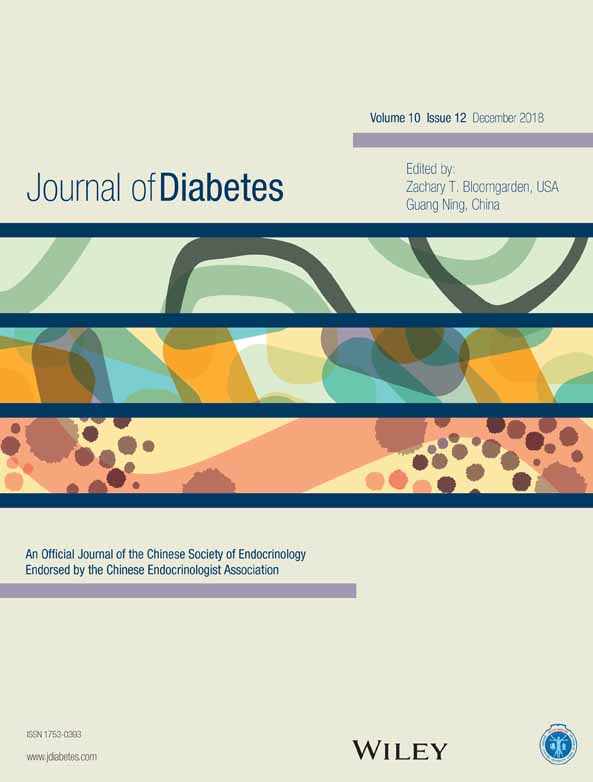Optimal body mass index cut-off points for prediction of incident diabetes in a Chinese population
中国人群中用于预测糖尿病的最优体质指数
Abstract
enBackground
The current body mass index (BMI) classifications have been established based on the risk of obesity-related conditions, but not specifically on type 2 diabetes mellitus (T2DM). The aim of this study was to identify the optimal BMI cut-off points for assessing incident T2DM risk in the Chinese population.
Methods
The longitudinal study cohort consisted of 8735 non-diabetic participants aged 20–74 years at baseline, with a mean follow-up period of 6.0 years. Body mass index, 2-h plasma glucose after a 75-g oral glucose tolerance test, and HbA1c were measured at baseline and follow-up.
Results
During the follow-up period, 825 participants were diagnosed with T2DM. In multivariable Cox regression analyses, after adjusting for covariates, a strong positive association between BMI and incident T2DM was found in the whole population; however, when stratified by age groups (20–39, 40–59, and 60–74 years), the risk associations between BMI and incident T2DM decreased with increasing age and were no longer evident in the 60–74 years group (Pinteraction < 0.001). The optimal BMI cut-off points for predicting T2DM risk for men and women were 25.5 and 24.4 kg/m2, respectively, in the 20–39 years group, and 23.5 and 23.0 kg/m2, respectively, in the 40–59 years group. There was no predictive performance of BMI in the 60–74 years group for either sex.
Conclusions
The results suggest that the performance of BMI in predicting T2DM risk was best in subjects of younger age and decreased with age. Age- and sex-specific BMI cut-off points should be considered for T2DM risk stratification in the Chinese population.
Abstract
zh摘要
背景
目前预测糖尿病的体质指数标准是建立在肥胖相关疾病风险基础之上, 而不是特别的建立于糖尿病风险基础之上。本研究目的为在中国人群中建立体质指数预测糖尿病发生的最佳切点。
方法
共纳入8735名非糖尿病受试者, 基线年龄为20-74岁, 平均随访6.0年。分别在基线和随访中测量体质指数、糖耐量试验(口服75 g葡萄糖后的2 h血糖)和糖基化血红蛋白。
结果
在随访期间新发糖尿病病例825例。利用Cox多元回归分析, 校正相关混杂因素后, 体质指数和新发糖尿病的风险在总人群中呈显著的正相关。然而, 此关系随着年龄的增长(20-39岁组, 40-59岁组, 60-74岁组)减弱(Pinteraction < 0.001)。此外, 在60-74岁组中上述风险关系已经消失。预测糖尿病发生的最佳体质指数切点在20-39岁组中分别为25.5 kg/m2(男)、24.4 kg/m2(女), 在40-59岁组中分别为23.5 kg/m2(男)、23.0 kg/m2(女), 在60-74岁组中, 无论男女, 体质指数均无法预测糖尿病的发生。
结论
结果提示使用体质指数预测糖尿病的效果在年轻成年人中最好, 并随着年龄增长减弱。在中国人群中需要考虑使用年龄及性别特异性的体质指数来对糖尿病进行分层。




